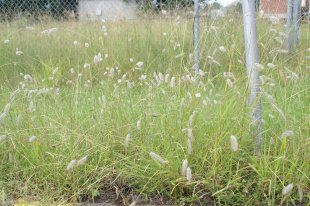
Queensland bluegrass
SCIENTIFIC NAME: Dichanthium sericeum
CATEGORY: C4 perennial
IDENTIFICATION TIPS
- Tufted warm season, perennial to 80cm tall. Stem nodes have a prominent ring of hairs
- Seedhead is subdigitate, to 7cm long and with 2-4 erect branches pressed together
- Spikelets are paired and hairy, with the lower awned. Spikelets occur to the base of the branches (i.e. no bare branch bases)
- Flowers from late spring to autumn
CLIMATIC & SOIL REQUIREMENTS
- Widespread and common
- More common on clay soils and sites that receive extra summer moisture, such as water run-on and flood areas
- Abundance varies from year to year; restricted to more favourable sites in dry years, but can become abundant following a series of wet summers
- Moderate drought tolerance, but low frost tolerance
GRAZING & NUTRITIONAL VALUE
- Moderate grazing value
- Digestibility ranges from 38-62 %
- Crude protein 2-7%
MANAGEMENT STRATEGIES
- Highly palatable and nutritious when young and actively growing; stalky and low quality at flowering
- Possibly more suited to cattle enterprises as it appears to be less palatable to sheep, allowing it to become tall and rank
- Growth responds well to increased fertility Declines under set stocking systems as cattle selectively graze it (sheep less so); better suited to rotational grazing
- Will easily re-establish from seed, so spell during flowering and seed set to increase or maintain populations
SIMILAR PLANTS
- The seedhead branches of red grasses (Bothriochloa species) are bare for a very short distance at the base and the nodes are hairless

(Dense heavily grazed stand: H Rose)

